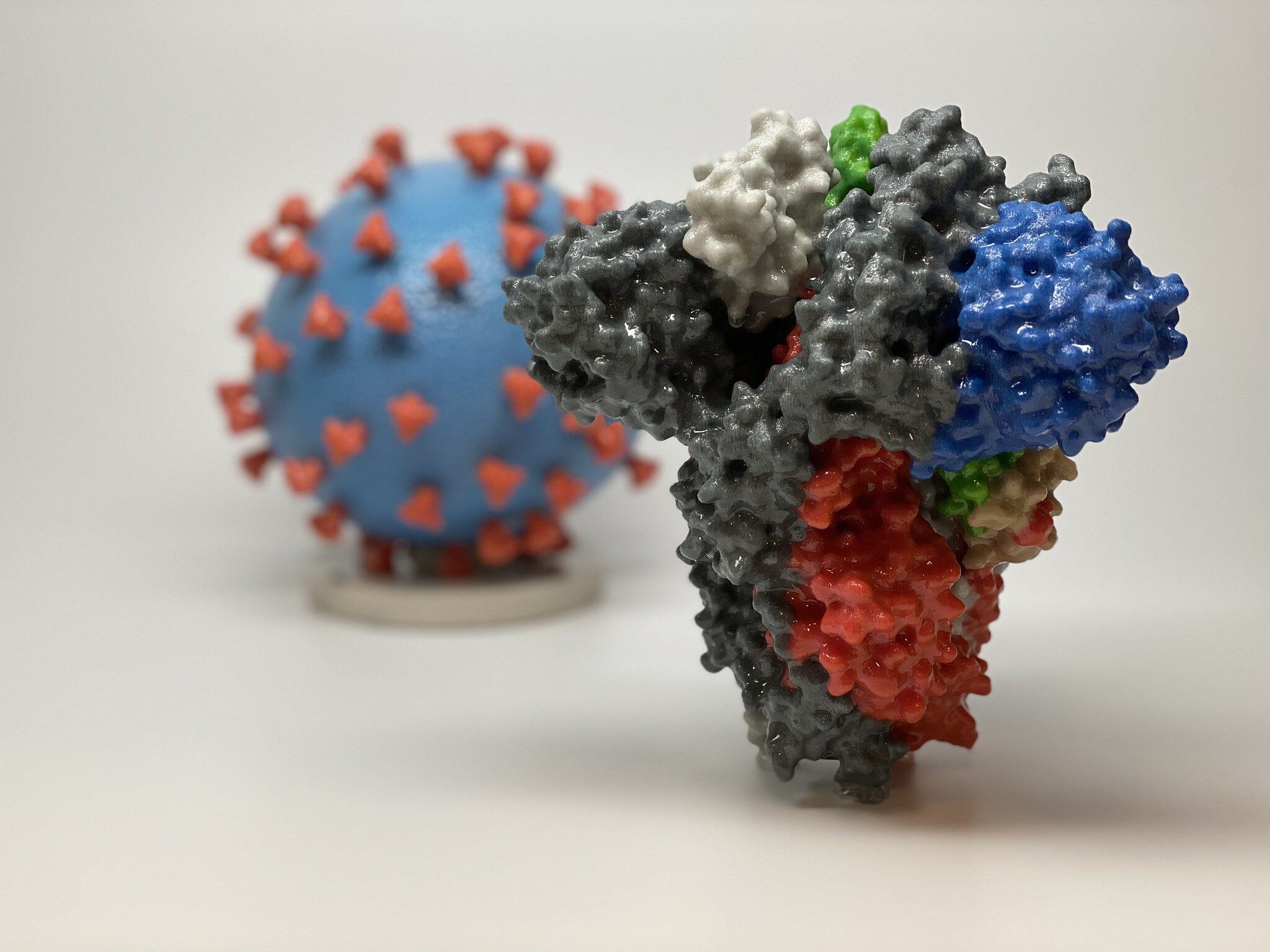

3D print of a SARS-CoV-2 spike protein, the virus that causes COVID-19, versus a 3D print of a SARS-CoV-2 virus particle. The spike protein (close-up) allows the virus to enter and infect human cells. In the virus model, the virus surface (blue) is covered with spike proteins (red) that allow the virus to enter and infect human cells. Credit: NIH
Researchers have shown that a variation in the viral genome of COVID-19 improved its ability to infect human cells and helped it become the dominant strain circulating worldwide today.
The study, published today in the journal. Cell, shows that the variation is more infectious in cell cultures under laboratory conditions. Called ‘D614G’, the variant makes a small but effective change in the ‘spike’ glycoprotein that protrudes from the surface of the virus, which it uses to enter and infect human cells.
The D614G variant of COVID-19 quickly became the dominant strain shortly after its emergence, with geographic samples showing a significant change in the viral population from the original to the new virus strain.
Researchers from Los Alamos National Laboratory in New Mexico and Duke University in North Carolina partnered with the University of Sheffield research group COVID-19 Genomics UK to analyze genome samples published in GISAID, an international resource for share genomic sequences among researchers around the world.
Dr. Thushan de Silva, senior clinical professor of infectious diseases at the University of Sheffield, led the analysis of the Sheffield data. He said: “We have been sequencing SARS-CoV-2 strains in Sheffield since the start of the pandemic and this allowed us to partner with our collaborators to show that this mutation had become dominant in circulating strains. The full peer-reviewed study Published today confirms this, and also that the new mutation variant of the D614G genome is also more infectious under laboratory conditions.
“The data provided by our team in Sheffield suggested that the new strain was associated with increased viral loads in the upper respiratory tract of COVID-19 patients, meaning that the virus’s ability to infect people could be increased.
“Fortunately at this stage, it does not appear that D614G viruses cause more serious disease.”
Dr. Bette Korber of the Los Alamos National Laboratory in New Mexico was the lead author of the study. She said, “It is possible to track the evolution of SARS-CoV-2 (COVID-19) globally because researchers around the world are making their viral sequence data readily available through the sequence database. GISAID viruses. Currently, tens of thousands of sequences are available through this project, and this allowed us to identify the emergence of a variant that has rapidly become the dominant form worldwide. “
New supporting experiments, broader sequencing and clinical data, and improved statistical models have been published today in full in CellHowever, the researchers are eager to emphasize that more laboratory tests on living cells are needed to determine the full implications of the mutation.
“It is remarkable to me,” said Dr. Will Fischer of the Los Alamos National Laboratory and author of the study. “That this increase in infectivity was detected by careful observation of sequence data alone and that our experimental colleagues were able to confirm it with live viruses in such a short time.”
Follow the latest news about the coronavirus outbreak (COVID-19)
Tracking changes in the SARS-CoV-2 peak: evidence that D614G increases the infectivity of the COVID-19 virus, Cell (2020). DOI: 10.1016 / j.cell.2020.06.043, www.cell.com/cell/fulltext/S0092-8674(20)30820-5
Cell
Provided by the University of Sheffield
Citation: New, more infectious strain of COVID-19 now dominates global virus cases: study (2020, July 2) retrieved July 2, 2020 from https://medicalxpress.com/news/2020-07-infectious-strain -covid-dominates -global.html
This document is subject to copyright. Other than fair dealing for private study or research purposes, no part may be reproduced without written permission. The content is provided for informational purposes only.